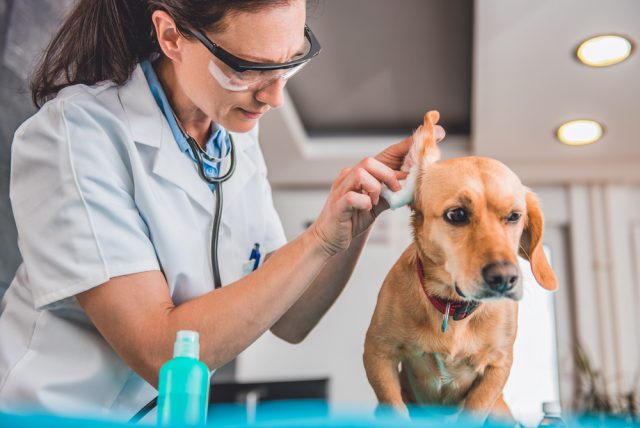Have you ever wondered why some dogs seem to be prone to ear infections? Ear infections are a common affliction among our beloved canine companions, causing discomfort and concern for both pets and their owners alike. While these infections can stem from various sources, understanding the primary reasons behind their development is crucial for prevention and effective treatment.
In this article, we explore the four main factors contributing to ear infections in dogs, shedding light on the importance of proactive care and vigilance in maintaining our furry friends’ ear health.
1. Moisture Buildup
When water gets trapped in the ear canal, it becomes a breeding ground for bacteria, fungi, or yeast to multiply, causing pain, inflammation, and discharge. Due to the structure of a dog’s ear, any dog that swims or gets bathed frequently has the potential to develop an ear infection, but breeds with droopy ears or hair that grows in the ear canal are more likely to have water that’s trapped long enough to cause infections.
2. Foreign Bodies or Parasites
Objects like grass seeds, small plant material, or parasites such as mites can find their way into a dog’s ear canal. These foreign bodies can irritate the ear, causing inflammation and infection if not promptly addressed.
3. Allergies
Allergic reactions to certain foods, pollens, or dust mites can trigger inflammation in the ear canals, making your dog more susceptible to infections. If your pooch is prone to ear infections and skin conditions like hot spots (red, itchy spots on their skin caused by infections), it’s worth a trip to your vet’s office to discuss possible food and environmental allergies.
4. Breed
Labs, Cocker Spaniels, Beagles, Dachshunds, Poodles, Shih Tzus, and Schnauzers top the list of dog breeds most prone to ear infections due to their ear structure, the hair that grows in their ears, and/or their propensity for swimming. But they aren’t the only ones. Find out if your dog is at risk for ear infections.

If you suspect your dog might have an ear infection, the best course of action is to take them to the vet for a diagnosis. Different causes require different treatments and only a vet can tell whether an infection is caused by bacteria, yeast, or mites.


 Toledo, United States.
Toledo, United States.